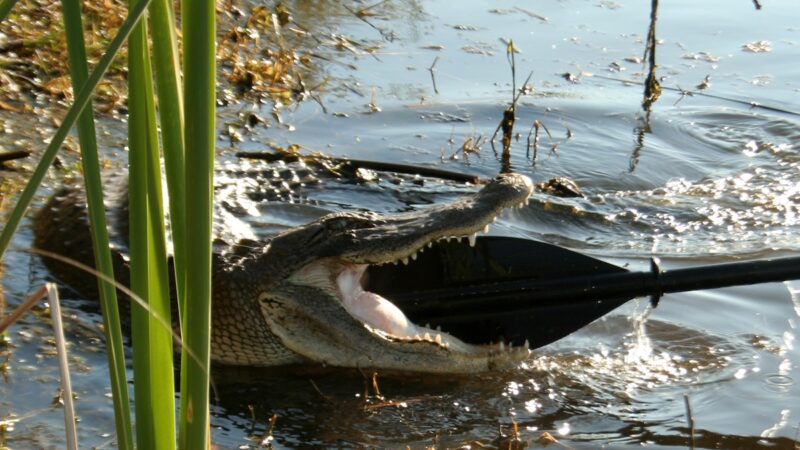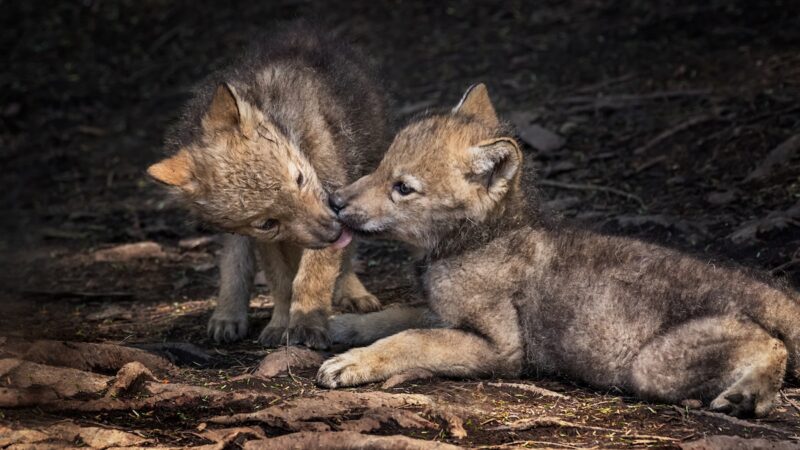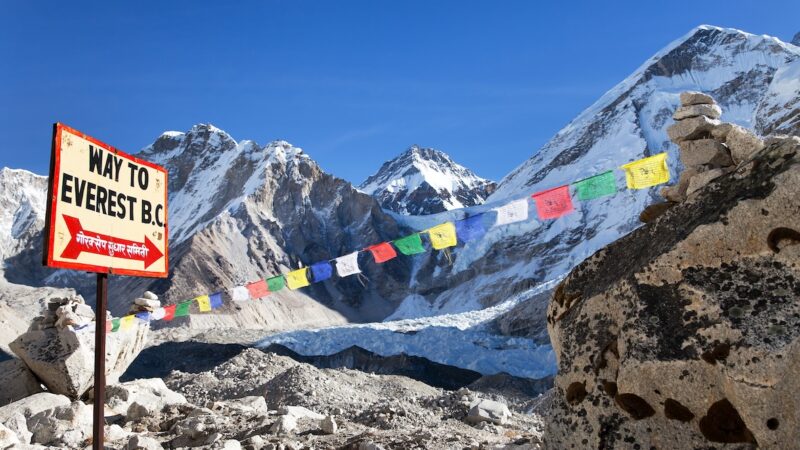100 National Parks Around the World
There are more than 6,000 national parks across 100 different countries. Can you imagine visiting even a fraction of them? If you’re looking to plan your next amazing outdoor adventure, try adding one of these gorgeous national parks to your list.
1. Yellowstone National Park, United States (Wyoming, Montana, and Idaho)
Founded in 1872, Yellowstone National Park was actually the very first national park. Covering 2.2 million acres, Yellowstone is known for its hydrothermal and geological features—it’s like the Grand Canyon of the Yellowstone River. With over 1,100 species of plants and 2,000 campsites, it’s clear why Yellowstone is a favorite for nature lovers and outdoors enthusiasts alike.
2. Sagarmatha National Park, Nepal
Sagarmatha National Park is home to the tallest peak in the world, Mount Everest. Home to the Sherpa people, there are also many unique and rare animal species in the area, such as the snow leopard. Sagarmatha National Park is known for its immense beauty, featuring mountains, deep valleys, and stunning glaciers.
3. Dolomiti Bellunesi National Park, Italy
Located in Northern Italy, Dolomiti Bellunesi encompasses some of the world’s most renowned mountains, including parts of the Alps and the Dolomite mountains. The park is 12 square miles and is home to not only mountains but also springs, canyons, and swamps. The highest peak in the park is Marmolada Peak at 10,968 feet.
4. Goreme National Park, Turkey
Known as the hot air balloon capital of the world, Goreme National Park in Turkey is truly a sight to see. With stunning rock formations, this national park offers a glimpse of the world from the Byzantine era, including ancient artwork, homes, and underground towns. The pinnacles throughout the park called “fairy chimneys” (also known as hoodoos) have been carved by the wind over thousands of years.
5. Fuji Hakone Izu National Park, Japan
The most well-known feature of this national park is Mount Fuji itself, but Fuji is just one part of the gorgeous terrain. Visitors can hike through the park, snorkel, or kayak to see the landscape. Locals recommend visiting Fuji Hakone Izu in the spring for the opportunity to see the beautiful cherry blossoms in bloom.
6. Fiordland National Park, New Zealand
This stunning national park is 100,000 years in the making. Fiordland National Park is a U-shaped glacier on the south island, and it’s New Zealand’s largest national park. Fiordland National Park is a nature lover’s dream. Visitors can experience glaciers, alpine lakes, and rainforest environments. They can also visit the Waiau River on the Kepler Track to see a filming location of The Lord of the Rings.
7. Calanques National Park, France
This is the 10th national park in France, founded in 2012. With over 12.4 miles of stunning coastlines and clear waters to dip your toes into, Calanques National Park is a beautiful park to visit, although it is difficult to access. The rock formations are over 100,000 million years in the making.
8. Komodo National Park, Indonesia
As a UNESCO Heritage site, Komodo National Park is made up of the islands Rinca, Komodo, and Padar, plus 26 others. With its endemic population of 5,700 giant lizards called Komodo dragons, this national park is a point of interest for many scientists.
9. Canaima National Park, Venezuela
Covering over 12,000 miles of land in southeastern Venezuela, Canaima National Park is the second-largest national park in Venezuela. It’s 65% covered by table mountain formations or “tepuis.” These tepuis are unique biogeological entities that can reach up to 3,000 feet tall. The tallest tepui, Mount Roraima, is a climber’s dream.
10. Addo Elephant National Park, South Africa
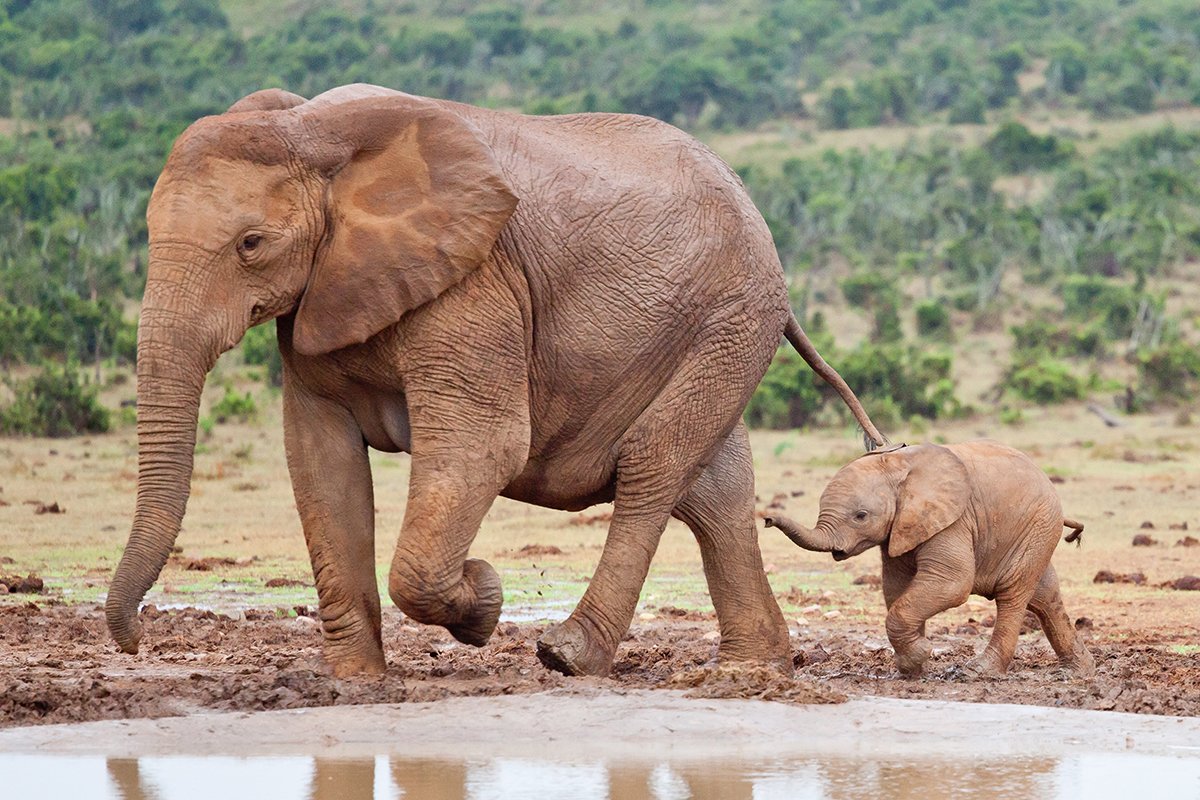
If you’re a wildlife lover, add Addo Elephant National Park to your bucket list. The park is known for the elephant herds that graze its watering holes. Take a game drive to get up close and personal with these magnificent creatures and, if you’re lucky, get a glimpse of lions and rhinos. Take on the two-day Alexandria Hiking Trail loop for an opportunity to stay in a hut on the trail.
11. Uluru-Kata Tjuta National Park, Australia
If you’ve ever wanted to catch a sunrise and a sunset on the same day, Uluru-Kata Tjuta is the place for you. With five designated viewing areas to watch (plus plenty of non-designated areas as well), you’ll get to see the sun’s rays hit the rocks in ways that will truly take your breath away. There’s also plenty of rock art to experience throughout the park.
12. Banff National Park, Canada
As a part of the Canadian Rocky Mountains, Banff National Park is a UNESCO World Heritage site, as well as Canada’s first national park, founded in 1885. Banff is a great location to get outside and hike. Another way to experience the park is to take a train from Vancouver to Banff. You can even get dinner in the first-class dining car.
13. Galapagos National Park, Galapagos Islands, Ecuador
500 miles west of mainland Ecuador, the Galapagos Islands are home to 3,040 square miles of preserved land that is loved by many visitors. The Ecuadorian government has protected 97% of the land on the Galapagos Islands, and Galapagos National Park is the first national park in Ecuador.
14. Bandhavgarh National Park, India
As the most visited wildlife preserve in India, Bandhavgarh National Park has the densest population of royal Bengal tigers. Take a safari to get up close (but not too close) to these gorgeous animals, or take the hour-long trek up to Bandhavgarh Fort over 2,647 feet above sea level. To take this hike through the thick forest, you must go with a guide.
15. Thingvellir National Park, Iceland
Thingvellir National Park encompasses part of the Atlantic Ocean ridge. It’s a place of unique geology and history. Thingvellir is located in an active volcanic area and is just 49 kilometers outside of Reykjavik. As well as being a UNESCO World Heritage site, Thingvellir is a popular location to watch the Northern Lights when people go to Iceland.
16. Los Glaciares National Park, Argentina
Los Glaciares is located in the southwest Santa Cruz Province of Argentina. The park gets its name from the fact that half of the park is covered in glaciers. The Upsala, Onelli, and Perito Moreno glaciers dip into the waters of Lake Argentino—a must-see spot in the park.
17. Great Smoky Mountains National Park, United States (North Carolina and Tennessee)
As the United States’ most visited national park, Great Smoky Mountains National Park is known for its beautiful wildflowers that bloom year-round. The Smoky Mountains are also known as the salamander capital of the world. Driving through the park is still free, and you’ll get to see some beautiful views from the comfort of your car, but if you want to get out and hike, you will need to purchase a parking pass.
18. Zhangjiajie National Forest Park, China
Located in the central-eastern area of China, Zhangjiajie National Park is 18.59 square miles. The park is famous for its pillar-shaped rock formations, which have been eroded over time by wind and rain. In recent years, Zhangjiajie National Park has become known as the “Avatar mountains,” even though there was no actual filming done in the park. James Cameron did take footage of the mountains beforehand, though, and used this in the final production of the movie to create the Hallelujah Mountains.
19. Hell’s Gate National Park, Kenya
Baboons, African buffalo, and zebras, oh my. Hell’s Gate National Park is known for all of these animals and more, as well as its unique geothermal activity. Ideal for a day trip, this national park is great for visitors looking for mountain biking and rock climbing. Though it is a relatively small park compared to the size of Kenya, it is jam-packed with opportunities for great activities, including taking a safari.
20. The Azores, Portugal
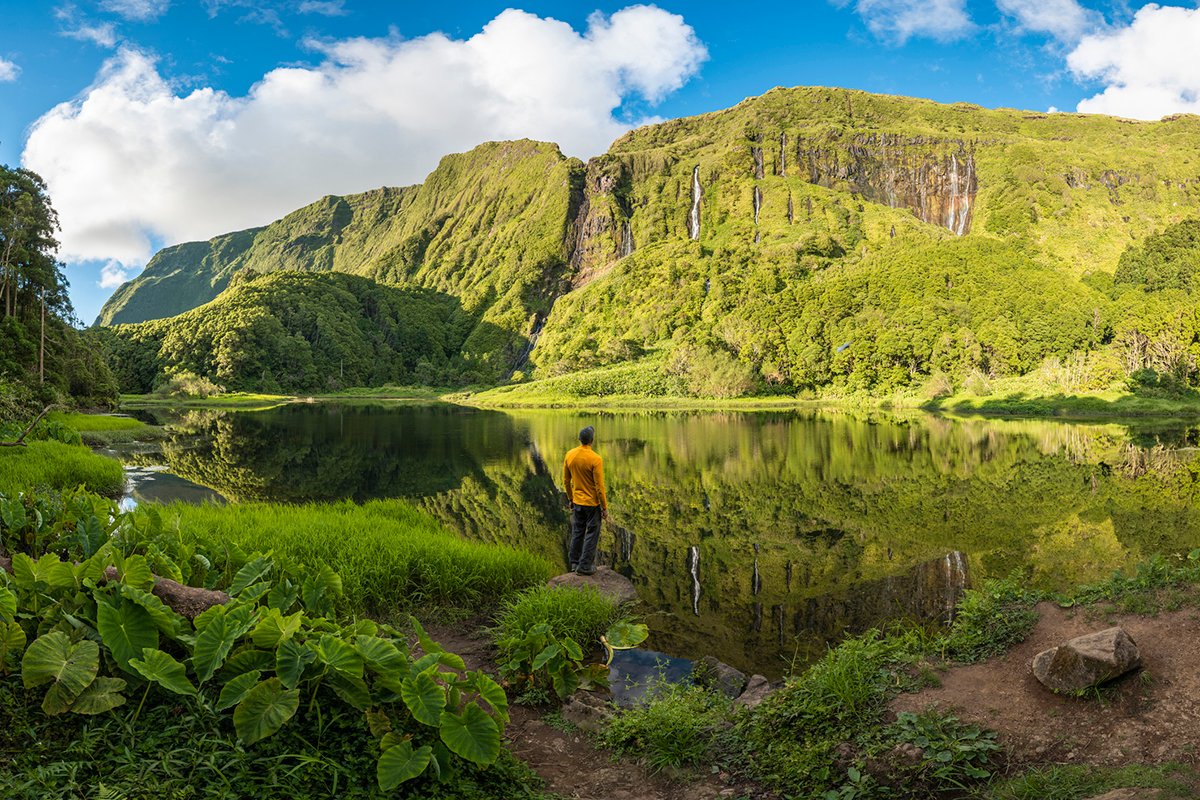
The Azores are a string of small national parks in Portugal. Known for volcanoes, the Azores are in the midst of a tourism boom as more people discover what the islands have to offer. With several national parks to visit within the Azores, you can see waterfalls, beaches, and a wide variety of flora and fauna.
21. Oulanka National Park, Finland
With views of some of the most impressive waterfalls in all of Finland, Oulanka National Park is definitely one t to add to your must-visit list. The Daily Mail has even called it the most magical park in Europe. With beautiful canyons and bridges over rushing waters, Oulanka is a breathtaking location with lots to do and see.
22. Andasibe National Park, Madagascar
Did you know that Madagascar is the only place on Earth where wild lemurs live? Andasibe National Park is open year-round and almost guarantees a lemur sighting. The park is a lush forest located close to the capital of Madagascar. Lemurs aren’t the only unique animals to spot in Andasibe National Park; you might also be lucky enough to see creatures like the Parson’s chameleon.
23. Torres del Paine National Park, Chile
In the south of Chile in the Magallanes region lies Torres del Paine National Park. The park is known for its glaciers, lakes, and granite mountains. With two main trails, the O trail and the W trail, there is plenty to see in this beautiful national park. The best part about hiking Torres del Paine is the 17 hours of daylight, which means you’ll be able to log a lot of hours on the trails.
24. Killarney National Park, Ireland
With the famous lakes of Killarney at your feet and the MacGillycuddy Reeks—the highest mountains in Ireland—above you, this national park will take your breath away. Killarney National Park is the twin park of Glacier National Park in Montana. Getting there is relatively easy by train, bus, or car.
25. Tikal National Park, Guatemala
Also known as the Maya Forest, Tikal National Park is home to an important archaeological site for the ancient Mayan civilization. Tikal National Park is a World Heritage site recognized for both its biodiversity and its cultural significance. The park covers 375 square kilometers, and the central part of the ancient city has over 3,000 buildings.
26. Bwindi Impenetrable National Park, Uganda
Do you want to see a gorilla in its natural habitat? Bwindi Impenetrable National Park is the place for you. You can access this park through Queen Elizabeth National Park or many other locations nearby. Here, you’ll be surrounded by over 160 species of trees, as well as many species of birds and butterflies. Bwindi is also home to half of the world’s mountain gorilla population.
27. Wapusk National Park, Canada
This national park encompasses and protects one of the largest polar bear maternity denning areas in the world. If you plan to visit, be sure to schedule a tour. For the best opportunities to see polar bears and their cubs, you’ll want to shoot for visiting in March.
28. The Cairngorms National Park, Scotland
The Cairngorms is the United Kingdom’s largest national park and is situated in the Scottish Highlands. The park is home to a number of activities, and you can even visit a number of castles during your trip. You’ll also have a chance to view a number of interesting creatures during your adventures, such as reindeer, Scottish wildcats, and eagles.
29. Iguazu National Park, Argentina, and Brazil
As part of the Atlantic Forest, Iguazu National Park is threatened by human activities and is a focus of global conservation efforts. It is also known for having one of the most beautiful waterfalls in the world. On the border of Argentina and Brazil, this park acts as a natural barrier between the two countries.
30. Hohe Tauern National Park, Austria
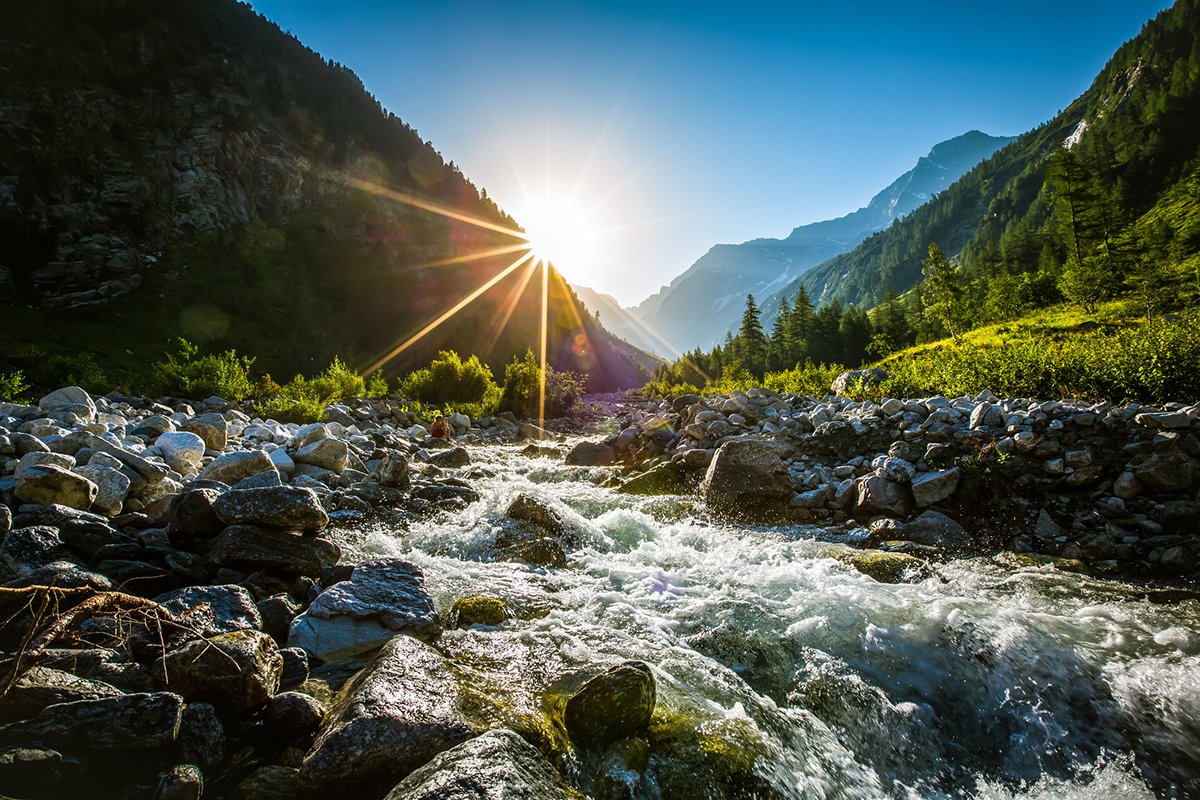
With mountains peaking at almost 10,000 feet, Hohe Tauern National Park is a hotspot for biodiversity. It is the largest protected area in the Alps in the world, and it’s full of impressive waterfalls and forests. Visiting the Hohe Tauern will get you within spotting distance of 10,000 different animal species and 1,800 different plant species.
31. Salonga National Park, The Democratic Republic of the Congo
Salonga National Park is only accessible by water, which makes the journey part of the adventure. Off the central basin of the Congo River, the national park is the largest tropical rainforest in Africa.
32. Manu National Park, Peru
This national park is one to visit if you love strange and fascinating animals. With over 850 species of birds, plus giant otters and giant armadillos, Manu National Park is well-known for its biodiversity. Part of the Amazon Rainforest in Peru, Manu is home to 221 different mammal species.
33. Kakadu National Park, Australia
As Australia’s biggest national park, Kakadu is home to ancient, historical landscapes, like rainforests and wetlands. At 20,000 square kilometers, Kakadu National Park is an archaeological reserve that will leave you breathless as you take in the prehistoric scenery.
34. Arenal Volcano National Park, Costa Rica
Covering almost 30,000 acres, Arenal Volcano National Park has not one but two volcanos—its namesake, Mount Arenal, and Chato. However, Chato has been inactive for almost 3,500 years. The rainy season lasts from May until January, but if you’re not afraid of a little rain (it typically comes and goes quickly), then you’ll enjoy spending time in this park with spectacular volcano views.
35. Vatnajokull National Park, Iceland
If you’d like to step foot on a glacier, you can do so at this national park in Iceland. Vatnajokull Glacier is a stunning 3,127 square miles of ice and snow, but it is shrinking because of climate change. In the past, there has been volcanic activity in this park, which encompasses 14% of Iceland’s territory.
36. Dry Tortugas National Park, United States (Florida)
If you’re looking for the ultimate underwater experience, Dry Tortugas off the coast of Key West is the location for you. With crystal-clear blue waters and coral reefs, this park is only accessible by boat or seaplane. Explore all seven islands and make sure to visit Fort Jefferson, especially if you’re an American history buff.
37. Erawan National Park, Thailand
As the 12th national park to be established in Thailand, Erawan National Park is best known for its seven-tiered waterfall and beautiful caves. Established in 1975, the emerald-green waters and limestone hills are truly a sight to behold.
38. Tongariro National Park, New Zealand
First established in 1887, Tongariro National Park is home to three volcanic mountains that are still active today. Whether you’re traveling on your own or with the whole family, this national park has something for everyone, and you won’t be disappointed by the beautiful views on the way. Now a UNESCO World Heritage Site, this park makes up part of the Taupo Volcanic Zone, part of the Ring of Fire.
39. Berchtesgaden National Park, Germany
Berchtesgaden National Park is the only German National Park in the Alpine region. The park was founded in 1978 and has a stunning swath of untouched landscapes. With a variety of cliffs and forests to explore, the park has garnered a reputation for being an escape for those who love the outdoors.
40. Patagonia National Park, Chile, and Argentina
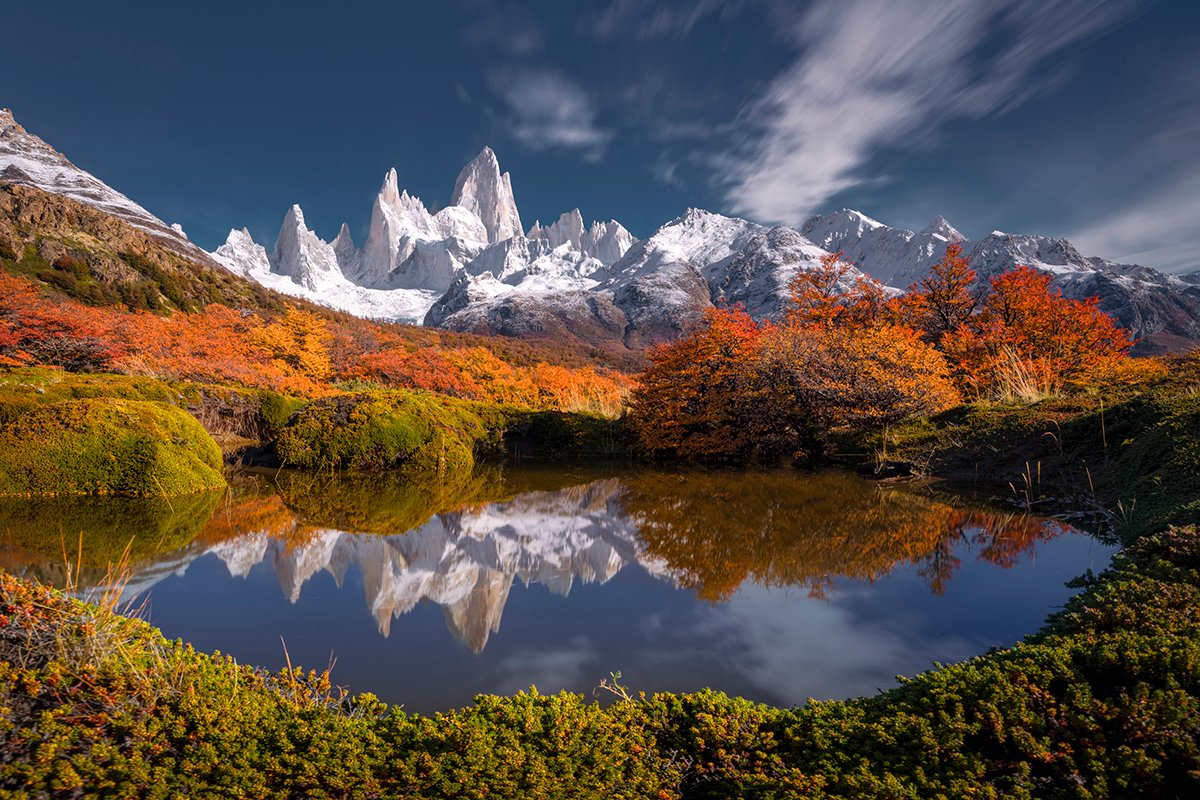
Covering 523.57 square miles between the Lago Jeinimeni and Lago Cochrane National Reserves, this national park is located in the southernmost region of Chile. The park is made up of five separate protected reserves and is located on the eastern side of the Andes Mountains. You can choose to fly over this remote park, which is filled to the brim with mountains, glacier fields, volcanoes, and lakes, or, if you’re an adrenaline junky, choose one of many other ways to experience the area.
41. Mount Kilimanjaro National Park, Tanzania
Mount Kilimanjaro is the highest free-standing mountain in the world (a dormant volcano, in fact), and many visitors come to Tanzania every year to take in this jewel of the African continent. Surrounded by plains, Mount Kilimanjaro towers over the savannah as a snowy peak. Located in a town called Moshi, the national park is about 650 square kilometers, and many endangered species live there.
42. Jotunheimen National Park, Norway
Lovingly nicknamed the “Home of Giants,” Jotunheimen National Park has over 250 mountains and abundant wildlife. Whether you’re looking to hike, climb, bike, or ski, there is something for you here. The national park is a part of Norse mythology; it’s known as the place where the jotner (trolls) lived. Jotunheimen National Park is home to some of the tallest mountains in northern Europe.
43. Jasper National Park, Canada
There are five regions to explore when you are in Jasper, which is Canada’s largest national park and the world’s second-largest dark sky preserve. Jasper National Park is a UNESCO World Heritage Site, and it was once a small railway town. When you visit, keep an eye out for elk and bears. Highlights include Angel Glacier and the stunning jade-colored Cavell Pond.
44. Hawai’i Volcanoes National Park, United States (Hawai’i)
Designated as an International Biosphere Reserve and a UNESCO World Heritage Site, this national park is one of the most unique geological wonders on Earth. Volcanoes National Park was established in 1916 and encompasses 523 square miles. Rising from sea level to 13,000 feet, there are a number of volcanoes to see here, as well as rainforests, deserts, and alpine tundras. Volcanoes National Park is known for having two of the most active volcanoes in the world: Kīlauea and Mauna Loa.
45. Gran Paradiso National Park, Italy
As one of 23 parks on the IUCN Green List, Gran Paradiso National Park has helped protect the ibex species from extinction. Just last year, the park celebrated its 100th birthday and is one of the best-known parks in Italy. This was also Italy’s first national park and includes over 703 square kilometers of protected land. The park is home to 57 glaciers, alpine meadows, and a number of threatened wildlife species.
46. Djerdap National Park, Serbia
Home to the longest and largest gorge in Europe, Djerdap National Park is free to enter and offers opportunities to walk, hike, kayak, and swim. (If you’re looking to hike, though, you must inform the park before arrival.) Humans have inhabited this site for over 2,000 years, and a number of artifacts dating back to the Mesolithic and Neolithic periods have been found there. Established in 1974, the park runs along the Danube River.
47. Victoria Falls National Park, Zimbabwe and Zambia
Victoria Falls National Park is one of the smaller parks on this list, covering only nine square miles. As the world’s largest waterfall, Victoria Falls is a UNESCO World Heritage Site and is one of the Seven Wonders of the World. The waterfall is actually made up of five smaller falls: Devil’s Cataract, Main Falls, Rainbow Falls, and Horseshoe Falls are all in Zimbabwe, and Easter Cataract is in Zambia.
48. Durmitor National Park, Montenegro
Formed by glaciers and underground streams, Durmitor National Park has dense forests and 18 glacial lakes. With many peaks reaching higher than 2,000 meters above sea level, Durmitor National Park is Montenegro’s largest protected area. It’s surrounded by three canyonsDraga, Susica, and Tara River.
49. Dartmoor National Park, England
Visit local museums and castle ruins on your visit to Dartmoor National Park. Whether you’re looking to bike or hike, there’s a little something for everyone in this national park. At 386 square miles, this park has rare wildlife and over 450 miles of paths to explore. Dartmoor National Park is an important historical site in Europe, being a focal point for Bronze Age archaeology, as well as being a location of inspiration for many British authors.
50. Great Barrier Reef Marine Park, Australia

The Great Barrier Reef is 1,400 miles long and is one of the largest coral reef systems in the world, made up of 2,900 individual reefs. There are over 1,500 species of fish living in the Great Barrier Reef, as well as a variety of seabirds, turtles, mollusks, and more. Though the reef is the highlight of the park, if you aren’t into swimming, you can experience aerial views of the park by taking a helicopter ride.
51. Volcanoes National Park, Rwanda
As the top location for gorilla safaris in Rwanda, Volcanoes National Park is a great place to see monkeys, birds, reptiles, and lots of other animals as well. Covering swaths of land from Virunga National Park in Congo all the way to Mgahinga Gorilla National Park in Uganda, the park is named after a string of now-dormant volcanoes and the caves formed from their eruptions over 62 million years ago.
52. Ao Phang-Nga National Park, Thailand
Founded in 1981, this marine national park covers 400 square kilometers and is home to sandy beaches, archaeological sites, mangroves, and sea-level caves that you can canoe and kayak in and explore. The national park is made up of 40 islands. It’ll take you about 12 hours to get there from Bangkok.
53. Blue Mountains National Park, Australia
Home to the Three Sisters, Blue Mountains National Park is a World Heritage Site. The Three Sisters is a rock formation that, according to Aboriginal legend, was originally three living sisters who turned to stone. The park is a little over 1,306 square miles and is home to large rivers and slopes. With 110 different trails to explore, there’s ample opportunity to try to spot a kangaroo.
54. Abel Tasman National Park, New Zealand
Abel Tasman is one of New Zealand’s smallest national parks, but visitors have the opportunity to complete one of New Zealand’s “Great Walks” here. The park follows beautiful coastlines and lush forests, and it’s known for its mild climate and evergreen trees. In recent years, the park’s administration has begun to work on a number of sustainability projects to preserve Abel Tasman’s native plants and wildlife.
55. Swiss National Park, Switzerland
As the oldest national park in the Alps, Swiss National Park features 80 kilometers of hiking trails and is home to animals such as ibexes, golden eagles, and bearded vultures. To keep visitors and animals safe, hikers are not allowed to leave the set paths. Swiss National Park is Switzerland’s only national park and is 172 square kilometers. The park’s motto has stayed the same since its inception almost 110 years ago: “Take only photographs, leave only footprints.”
56. Udawalawe National Park, Sri Lanka
Udawalawe National Park is one of Sri Lanka’s most popular tourist destinations, and many people book safaris to see elephants here. Besides the nearly 600 elephants in the park, there are also leopards, crocodiles, and water buffalo. Elephant sightings are very common, so you’ll definitely want to pack your camera.
57. Wadi Rum Protected Area, Jordan
Wadi Rum is a mixed natural and cultural site located in southern Jordan, near the border with Saudi Arabia. The site has been inhabited for 12,000 years and features 25,000 rock carvings and 20,000 inscriptions all within a varied, desert terrain. This site is the largest wadi (ravine) in Jordan and is about the size of New York City.
58. Skaftafell National Park, Iceland
Established in 1967, Skaftafell National Park is home to a diverse landscape. Since 2008, it’s been a part of the larger Vatnajokull National Park. If you’re looking to hike Iceland’s largest mountain peak, you’ll definitely want to visit both parks. Skaftafell is known for its variety of plant life, growing between glaciers and sand dunes. You’ll be able to take in beautiful waterfalls and lagoons during your trip here as well.
59. Mount Toubkal National Park, Morocco
Mount Toubkal’s peak is more than 13,000 feet above sea level. When you reach the top, you can see rural Morocco. The ascent up the mountain takes about two days, but you do the majority of the climbing on the first day, which will take you about five hours. Though the climb is challenging, it’s worth it for the experience and the view.
60. Plitvice National Park, Croatia
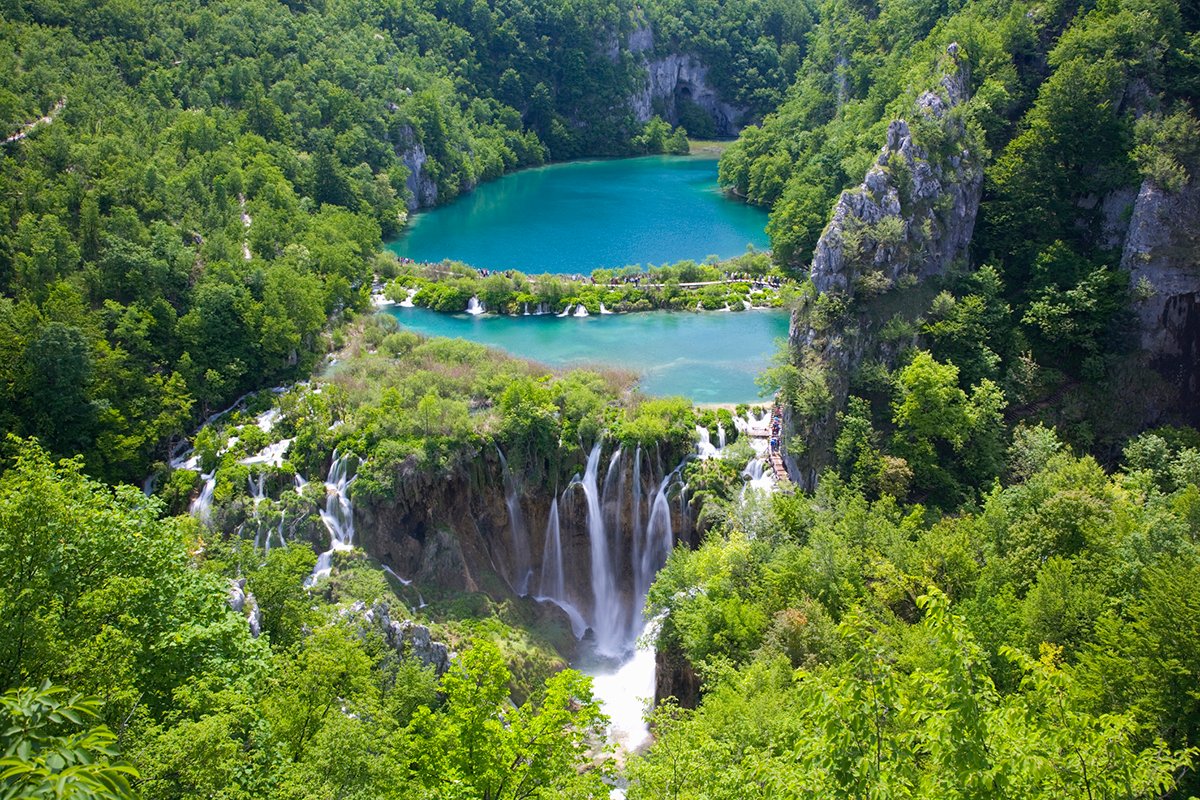
As Croatia’s largest and oldest national park, Plitvice National Park offers natural dams and the opportunity to see bears, wolves, and a variety of rare bird species. Even before its inception as a national park in 1949, Plitvice National Park has always attracted tourists and nature lovers and has been a UNESCO World Heritage Site since 1979.
61. Kruger National Park, South Africa
If you’ve been dreaming of going on a safari, consider Kruger National Park, which is known for its beauty and historical and archaeological sites. At a whopping 2 million hectares, this park is a little less than 300 miles from Johannesburg. When you visit, you’ll have the opportunity to see the big five: buffalo, elephants, leopards, lions, and rhinos, and you will leave you feeling connected to nature.
62. Jim Corbett National Park, India
This park is a part of the Corbett Tiger Reserve, and the area is known for its large number of tigers. To promote tourism, the national park offers six different tourism zones. The park opened in 1936 and was originally named Hailey National Park. It is 500 square kilometers and offers opportunities to see beautiful wildlife. This is another great location if you’re looking for a safari.
63. Serengeti National Park, Tanzania
With the highest concentration of mammals in the world, including 400 lions and 550 cheetahs, the Serengeti is one of the most famous protected areas in Africa. You can visit the national park or go on a fly-in safari to get a view of the beautiful grasslands and woodlands. As home to the great migration, the Serengeti is a true wonder of the natural world
64. Jiuzhaigou National Park, China
Located in the southern Sichuan Province of China, Jiuzhaigou National Park is a UNESCO World Heritage Site and a World Biosphere Reserve. The 280-square-mile park is known for its beautiful waterfalls and snow-capped mountains. Jiuzhaigou Valley is the heart of the park in the Min Mountains. If you want to take in all three sections of the park, the Zechawa, Rize, and Shuzheng Valley, you’ll want to make sure you schedule at least two days here.
65. Lake District National Park, England
As England’s largest national park, Lake District features stunning landscapes and a number of villages all with rich cultural heritage. The UNESCO Heritage Site is known for its lakes, ancient woodlands, and diverse wildlife, as well as its complex geology. The park’s conservation is grounded in the three themes of identity, inspiration, and conservation.
66. Saxon Switzerland National Park, Germany
Located in eastern Germany near the Czech Republic, this swath of forested land is about 274 square miles. With limestone mountains and rocky canyons, the highest point in the park is about 1,800 feet. This national park is considered one of the “most spectacular natural landscapes of Europe,” and it’s just a few miles outside of Dresden.
67. Corcovado National Park, Costa Rica
If you’re an avid backpacker, Corcovado National Park should be near the top of your bucket list. Home to 13 major ecosystems, including rainforests and mangrove swamps, this national park also houses a number of Costa Rica’s most threatened species, including scarlet macaws and jaguars. Corcovado National Park is located on the Osa Peninsula and is considered to be the “Crown Jewel” of the Costa Rican National Parks.
68. Rocky Mountain National Park, United States (Colorado)
At 415 square miles, Rocky Mountain National Park is a stunning alpine region in the United States with 300 miles of hiking trails. From May 26 until October 22, there is timed admission to the park. With a number of scenic drives, lots of wildlife, and the opportunity to watch the sunrise and sunset, this national park is one you can’t miss.
69. Isla Bastimentos National Marine Park, Panama
If you’re looking to get away from the busy Panama city life, take a water taxi over to Isla Bastimentos National Park. Visit Wizard Beach for a scenic jungle-side beach or Red Frog Beach to see the infamous creature that inhabits the local forest, or go snorkeling at Coral Cay. No matter what you decide to do at this national park, you’re sure to have a good time.
70. Snowdonia National Park, Wales
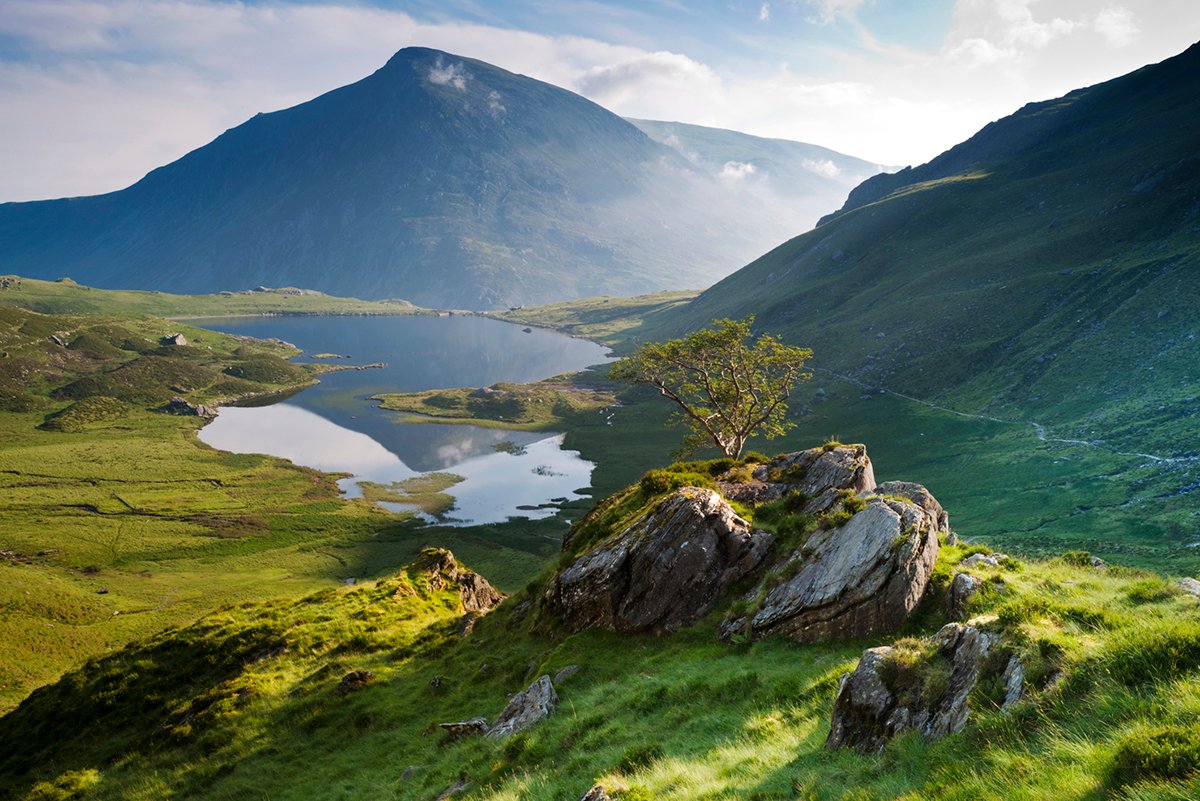
Snowdonia or Eryi National Park is Wales’ largest national park at 823 square miles. The park is home to 26,000 residents, and another four million people visit every year. There are nine different mountain ranges in the park and 74 miles of coastline. The mountains are made primarily of volcanic rock with valleys created by glaciers.
71. Simien Mountain National Park, Ethiopia
If you want to see some of the rarest animals in the world, visit Simien Mountain National Park. Home to the gelada baboon, Simien fox, and the Walia ibex—an animal that can only be found here. Located in northern Ethiopia, the park has endured millions of years of erosion to create jagged mountains, valleys, and drops.
72. Mayflower Bocawina National Park, Belize
First established in 2001, Mayflower Bocawina National Park was originally created to preserve the Mayflower archaeological site in Belize, and as time went on, the park expanded to also preserve the ecosystem and biodiversity. Located in the Stann Creek District of Belize, the park is located on the eastern end of the Mayan Mountains and the coastal plains. The national park encompasses 7,000 acres of tropical forests.
73. Cinque Terre National Park, Italy
On the coast, in the province of La Spezia, Cinque Terre is the smallest national park in Italy. Protected as a UNESCO World Heritage Site, this national park is home to over 5,000 residents and brings together agriculture, history, culture, and nature. Cinque Terre National Park is made up of five fishing villages, and the best way to take it all in is to hike along the coast. With the ocean on one side and vineyards and olive groves on the other, this national park is small but mighty.
74. Northeast Greenland National Park, Greenland
Covering 972,000 square kilometers, Northeast Greenland National Park is the largest national park and the ninth-largest protected land mass in the world. This national park is one of the most interesting geological locations in the Arctic and is one of the places you are most likely to spot a polar bear in Greenland. Established in 1974, this national park does not have any permanent residents but is home to walruses and 40% of the world’s population of musk oxen.
75. Annapurna Conservation Area, Nepal
As the largest conservation area in Nepal, Annapurna Conservation Area covers the Annapurna Himalayan range, as well as Kali Gandaki River Valley—the deepest valley in the world. The project to create the conservation area began in 1986 and was officially established in 1992. It’s Nepal’s most popular trekking region.
76. Lofotodden National Park, Norway
If you’ve ever wanted to see mountains rising out of the ocean, add Lofotodden National Park to your travel itinerary. The national park is located on the island of Moskenesoy and has many outdoor activities to offer on land and at sea. Walk barefoot on the beaches and swim in the Atlantic Ocean for an unforgettable outdoor experience.
77. Khao Sok National Park, Thailand
Home to the oldest evergreen rainforest in the world, Khao Sok National Park is one of the most popular destinations in the country. With plenty of hiking trails and the opportunity to see elephants, this is a paradise for outdoor enthusiasts. One of the most popular attractions in the park is Cheow Lan Lake.
78. Triglav National Park, Slovenia
As Slovenia’s only national park, Triglav is home to tall mountain peaks and large blue lakes. Triglav is Slovenia’s largest mountain and is considered to be a holy location. Surrounded by legend, this national park is said to be home to a mythical creature called a Goldhorn. The park was established in 1924 and is close to the borders of Slovenia, Austria, and Italy.
79. Whitsunday National Park, Australia
This national park is known for its beaches covered by white sand. Whitsunday National Park is a great location to view humpback whales between May and September or go snorkeling to view gorgeous and vibrant-colored reefs up close. Located off the coast of Queensland, this national park is made up of 31 small islands bordered by the Great Barrier Reef.
80. Elk Island National Park, Canada
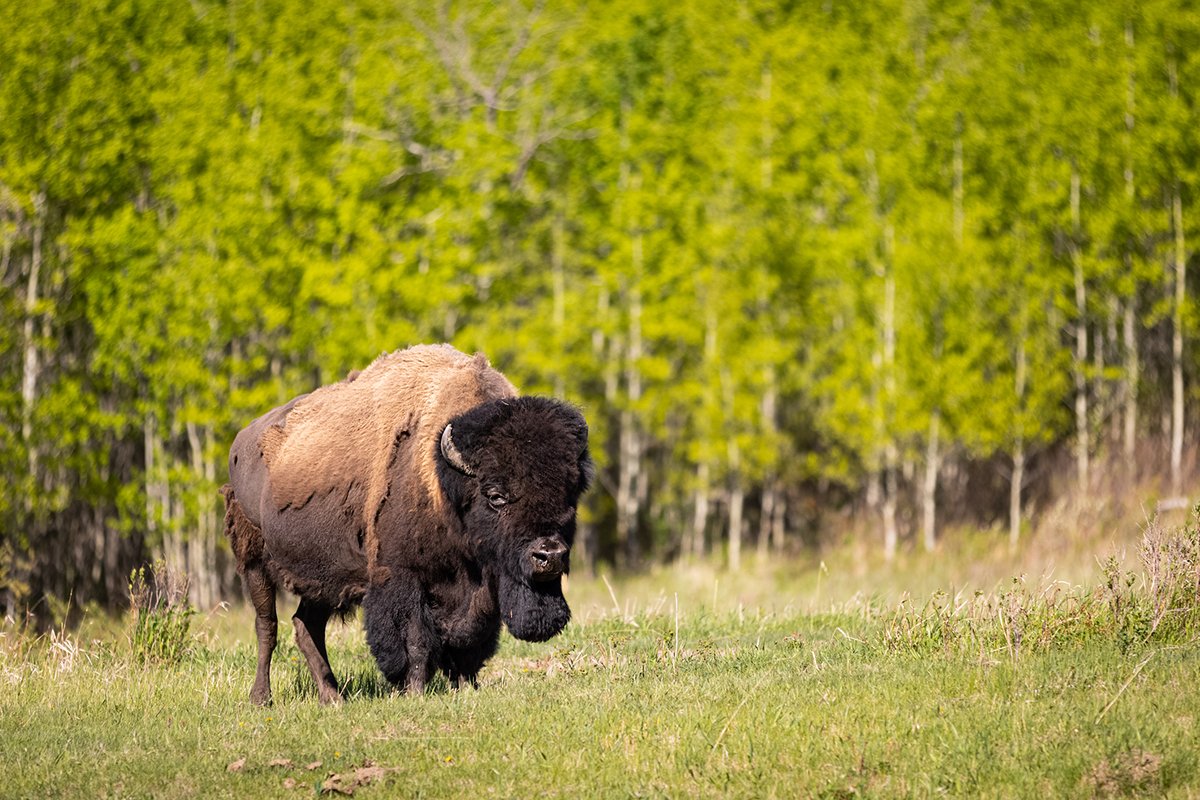
Located 35 minutes east of Edmonton, Elk Island National Park is known for its herds of bison and elk, as well as its 250 bird species. As a UNESCO-designated Biosphere Reserve, this national park is full of beautiful lakes, wetlands, prairie meadows, and aspen woodlands. Elk Island National Park is part of the Beaver Hills Dark Sky Reserve, making it a great location to take in the night sky.
81. Naejangsan National Park, South Korea
At just 31 square miles, Naejangsan National Park is one of the smaller national parks in South Korea. It is known for its colorful fall foliage and beautiful cherry blossoms and azalea bushes. Naejangsan Mountain is one of the main focal points in the park, but it is also known for its waterfalls and temples, like the Baegyangsa Temple and Naejangsa Temple. Check the weather before visiting, because the park closes during inclement weather.
82. Murchison Falls National Park, Uganda
Sometimes referred to as Kabalega National Park, Murchison Falls is known for being home to the world’s most powerful waterfall. The falls are known for pushing out roughly 300 cubic meters of water per second. Established in 1927, Murchison Falls National Park is the largest national park in Uganda, covering 1,483 square miles of land. This national park is also home to 73 different animal species, including buffaloes, leopards, lions, and elephants.
83. Tatra National Park, Poland
Tatra National Park Poland works in conjunction with its sister national park, Tatra National Park Slovakia. The parks are made up of the High Tatras and the Western Tatras, and the governments work together to protect and preserve the mountains. Tatra National Park is one of the largest national parks in Poland and was established in 1954.
84. Halgurd Sakran Nature Reserve, Iraq
Halgurd Sakran Nature Reserve is the first national park in Iraq, and there were a number of struggles before it was established. In what was called a “gunless war,” a team of environmentalists in Iraq worked hard to build a nature preserve after years of environmental destruction. The national park is located in northern Iraq, near Iran and Turkey.
85. Pagsanjan Gorge and Falls National Park, Philippines
One of the most famous waterfalls in the Philippines, Pagsanjan Falls is only accessible by dugout canoe. To get under the waterfall, you must take a bamboo raft, which is not considered safe for children. Located in the province of Laguna, this national park is a very popular tourist attraction in the Philippines.
86. Rapa Nui National Park, Chile
More famously known by its indigenous name, Easter Island, Rapa Nui is known for its enormous stone figures called moai. These sculptures have fascinated people all over the world for hundreds of years. This national park is a protected Chilean wildlife site and is a pillar of the Rapa Nui culture.
87. Mana Pools National Park, Zimbabwe
Mana Pools National Park is a World Heritage Site that’s home to a number of stunning wild animals, including elephants, buffalo, leopards, cheetahs, and a large concentration of Nile crocodiles. The park is made up of three protected areas: Mana Pools National Park, Sapi Safari Area, and Chewore Safari Area. Covering 2,612 square miles, Mana Pools National Park is located along the Zambezi River on the border of Zimbabwe and Zambia.
88. Paparoa National Park, New Zealand
This national park was put together very strategically to encompass a large variety of landscapes and ecosystems. Limestone is underneath much of the park, creating a number of stunning rock formations nicknamed “pancake rocks.” With a number of beautiful mountain peaks and river canyons, Paparoa National Park is a great place to visit if you’re on the west coast of New Zealand.
89. Bannerghatta Biological Park, India
Bannerghatta Biological Park was created to bring public awareness to conservation issues and provide opportunities for scientific research in India. Encompassing more than 104.27 square kilometers of land, the park is also home to India’s first-ever Butterfly Park. Bannerghatta Biological Park was established in 1971 and is also home to a zoo, an aquarium, a children’s park, a crocodile farm, a snake park, and a prehistoric animal park.
90. Denali National Park and Preserve, United States (Alaska)
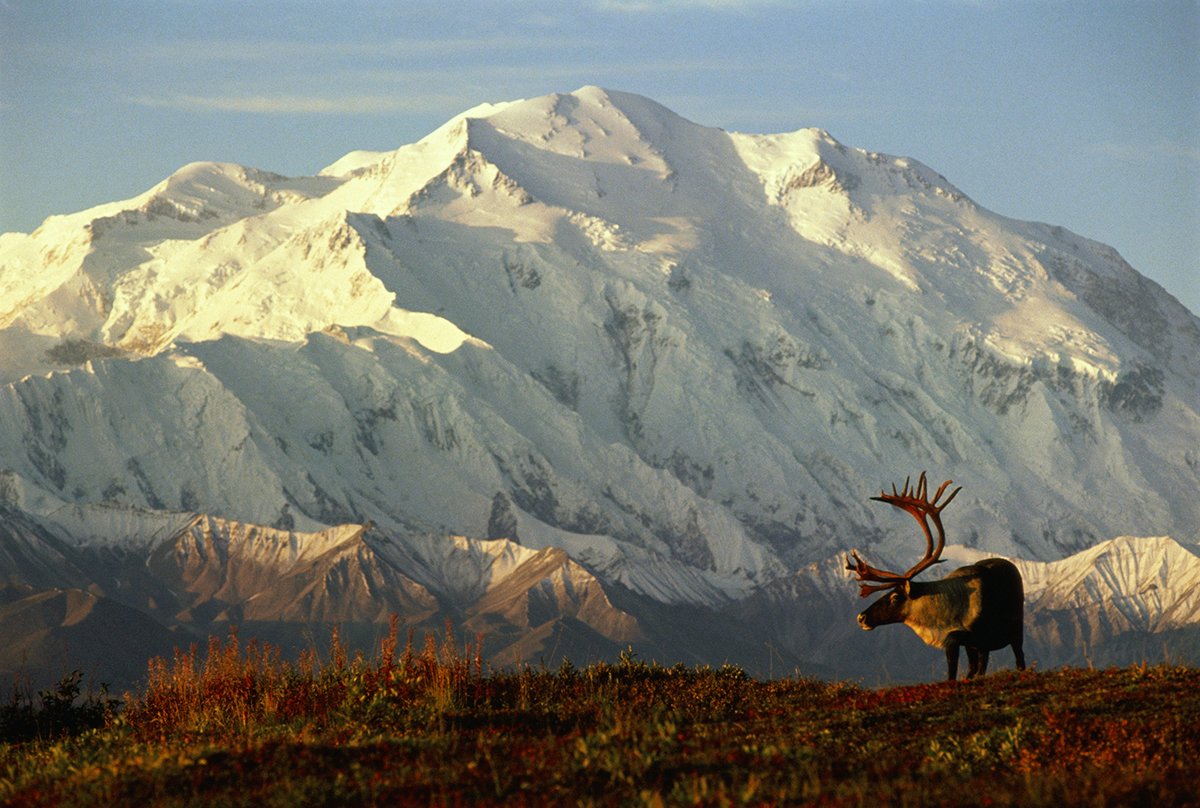
At a whopping six million acres, Denali National Park and Preserve is home to North America’s tallest peak. With snowy mountains and a high alpine tundra, many visitors take bus tours of the park, but you can also hike, bike, and raft at certain times of the year. Denali National Park and Preserve is 5.5 hours from Anchorage and eight hours away from the Alaskan Railroad.
91. Yala National Park, Sri Lanka
Yala National Park is known for having the highest population density of leopards on the planet. While also being home to elephants and deer, visitors to this national park increase every year. One of the things that makes Sri Lanka unique is the way in which people live side-by-side with animals, often having to stop to let elephants cross the road. With inland jungles and beautiful beaches, Yala National Park is divided into five blocks, but blocks one and five are the only ones open to the public, which helps preserve as much natural wildlife as possible.
92. Rondane National Park, Norway
Established in 1962, Rondane National Park was the first national park in Norway. Much of the park is located above the treeline, with its lowest point being 3,300 feet above sea level and the highest being 7,146 feet above sea level. With 10 peaks surrounding Rondvatnet Lake at the center of the park, there are a number of beautiful hikes in the area. The national park is home to a large population of wild reindeer.
93. Chobe National Park, Botswana
Located in a small town on the border of Zimbabwe, Zambia, and Namibia, Chobe National Park is considered to be one of the best wildlife paradises in the world. With stunning animals, lush vegetation, and a number of waterways, there are several ways to take in this national park. Many people prefer to book a safari when they come to Chobe National Park to get up close and personal with some wondrous creatures, like elephants.
94. Cat Ba National Park, Vietnam
Cat Ba Island is the largest island off the shore of Vietnam. The park covers 102 square miles of land and 35 square miles of inshore waters. With over 1,500 species of plants and 130 different species of animals, Cat Ba National Park is a diverse wonderland covered in rolling mountains and beautiful vegetation. Established in 1986, Cat Ba National Park gets millions of visitors, both domestic and international. It is now a UNESCO World Heritage Site.
95. Roatan Marine Park, Honduras
As a part of the second-largest barrier reef in the world, Roatan’s coral reefs are part of the Mesoamerican Reef system. Roatan Marine Park is a popular tourist attraction, receiving 1.9 million visitors each year. Though this contributes almost $1 billion to the Honduran government, the health of the reef is at risk from the tourists, as well as unplanned urban development. Roatan Marine Park is 70% covered in coral.
96. Verdon Region Natural Park, France
Verdon Region Natural Park is located on the Verdon River, which supplies many of France’s largest cities with drinking water. The park was established in 1997 and features stunning landscapes, like Castillon Lake and the Valensole plateau. Verdon Region Natural Park was created in order to protect and restore olive groves.
97. Penada-Geres National Park, Portugal
Whether you love hiking up the tallest mountains you can find or taking a relaxing dip in a scenic lake, Peneda-Geres is a beautiful park that is just 90 minutes outside of Porto. The park encompasses the mountains of Peneda, Soajo, Armarela, and Geres. As a UNESCO Biosphere Reserve, the park covers 700 square kilometers of protected land.
98. Tambopata National Reserve, Peru
Located in the Amazon rainforest in southeastern Peru, Tambopata National Reserve is home to a number of diverse landscapes and has incredible biodiversity. Both the reserve and the surrounding area have a rich cultural heritage, and many indigenous families still live in the area. The Tambopata National Reserve has 1,200 species of butterflies, 1,255 species of plants, and a variety of other species, including amphibians and mammals.
99. Coiba National Park, Panama
This national park is made up of several small islands, including Coiba Island. Coiba National Park is home to threatened species such as the crested eagle, and the park is often used as a natural laboratory for scientific research. Since 2005, Coiba National Park has been considered a UNESCO World Heritage Site. It’s also known as a world-class diving destination.
100. Antarctica Protected Area, Antarctica
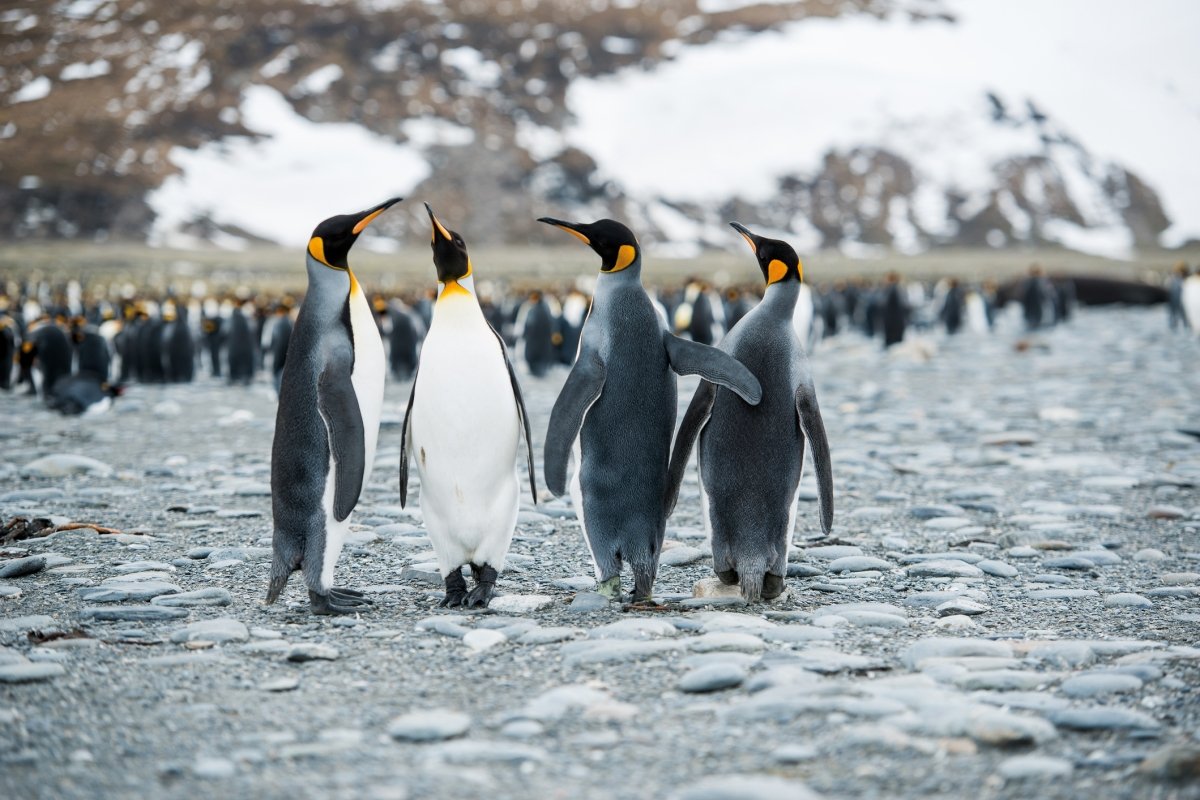
Though not technically a national park, the entirety of this continent is a protected area of land. Since 1959, Antarctica has been a scientific preserve for research. However, the rapidly melting ice in the area is a cause for concern. Much of the continent is being protected to keep the flora and fauna intact, as well as to minimize environmental impacts.
Which of these national parks will you be adding to your bucket list? Tell us in the comments.
Source: https://outdoors.com/national-parks-around-the-world/


